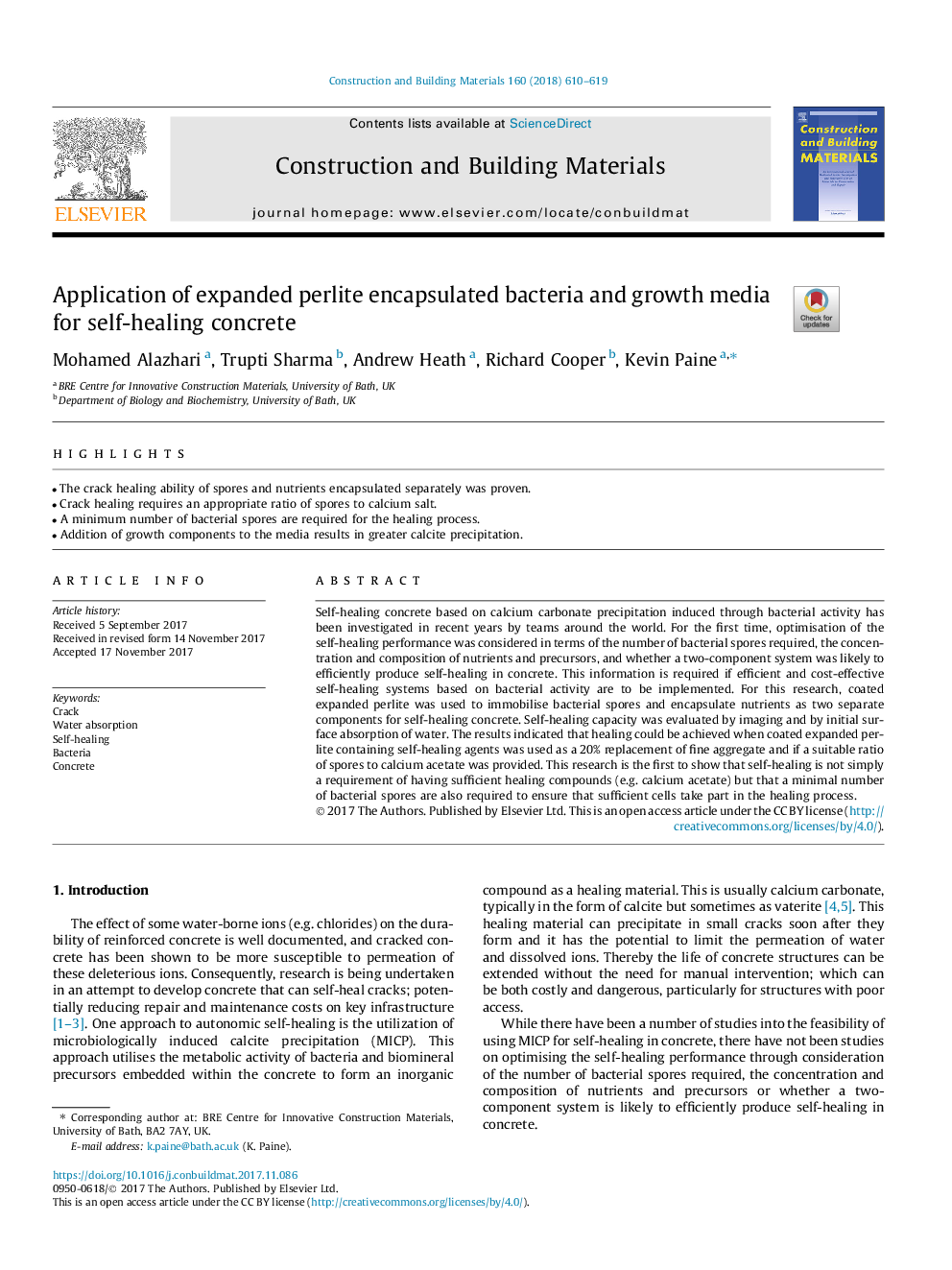| Article ID | Journal | Published Year | Pages | File Type |
|---|---|---|---|---|
| 6717131 | Construction and Building Materials | 2018 | 10 Pages |
Abstract
Self-healing concrete based on calcium carbonate precipitation induced through bacterial activity has been investigated in recent years by teams around the world. For the first time, optimisation of the self-healing performance was considered in terms of the number of bacterial spores required, the concentration and composition of nutrients and precursors, and whether a two-component system was likely to efficiently produce self-healing in concrete. This information is required if efficient and cost-effective self-healing systems based on bacterial activity are to be implemented. For this research, coated expanded perlite was used to immobilise bacterial spores and encapsulate nutrients as two separate components for self-healing concrete. Self-healing capacity was evaluated by imaging and by initial surface absorption of water. The results indicated that healing could be achieved when coated expanded perlite containing self-healing agents was used as a 20% replacement of fine aggregate and if a suitable ratio of spores to calcium acetate was provided. This research is the first to show that self-healing is not simply a requirement of having sufficient healing compounds (e.g. calcium acetate) but that a minimal number of bacterial spores are also required to ensure that sufficient cells take part in the healing process.
Related Topics
Physical Sciences and Engineering
Engineering
Civil and Structural Engineering
Authors
Mohamed Alazhari, Trupti Sharma, Andrew Heath, Richard Cooper, Kevin Paine,
